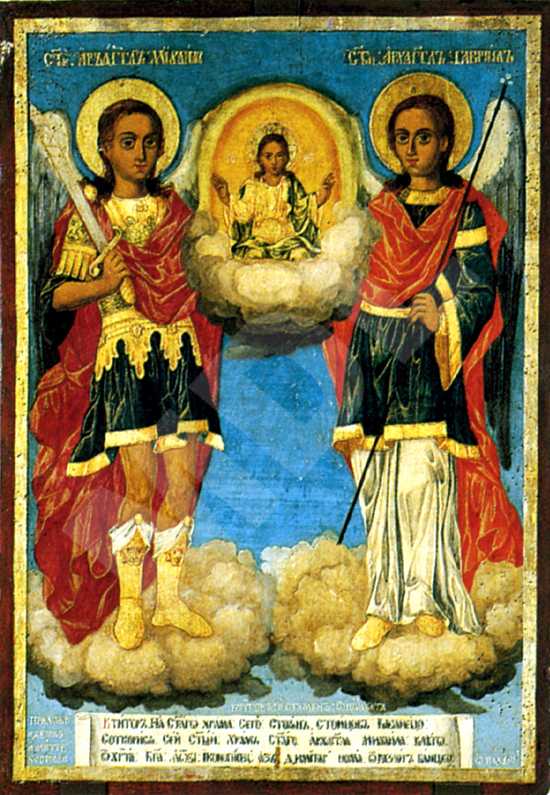Council of the Archangels
Type:
Icon
Period:
1861 year
Dimiter T. Molerov, born in 1780 in Bansko, son of Toma Vishanov the Moler. One of the best-known painters, a representative of the Bansko school of art, a disciple of his father, influenced by the art of Athos. Author of the murals of the naos in the St Archangels' paraclete in the Rila monastery, the murals in the Church of the Assumption of the Virgin in the Pchelino dependance. In 1840 and 1841 together with his son Simeon Molerov he paints the murals and the sponsors' portraits in St. Nicholas' and St. John of Rila's paracletes in the principal church in the Rila monastery. Among D. Molerov's major achievements in iconography are the following icons: St. Nicholas (1816) from St. Archangel Michael's church in the village of Leshko, Christ All-triumphant with Angels and Cherubim (1833), The Nativity and a Crucifixion from St Elijah the Prophet's church in the village of Usenovo. He has also worked in Belgrade on an invitation by Prince Milosh Obrenovich of Serbia. He died in 1870 in Bansko.
Dimmensions (cm):
80
/ 57
/ 3
Location
Country: Bulgaria
Province: Blagoevgrad
Village: Leshko
Church: St. Archangel Michael
Source
Country: Bulgaria
Province: Blagoevgrad
Village: Leshko
Church: St. Archangel Michael
Description
Saints Archangel Michael and Archangel Gabriel are portrayed standing side by side, holding a medallion painted in which is Jesus Christ. Saint Archangel Michael is in full armour and is holding a sword in his right hand. Saint Archangel Gabriel is dressed in a chlamys with a red mantle over it, and is holding a spear in his left hand.
Iconographical technique: Tempera
The varnish cover is applied thinly.
Base material: Wood
The icon's base is a softwood panel, reinforced with two beams. The ground coat is of plaster, laid thinly, comparatively unimpaired, damaged in the area of the faces (the image of St. Archangel Gabriel) and along the frame.
State, restoration traces and comments
The painting layer is missing in the places where the ground coat is damaged. There are some damages on the painting layer itself in the area of the gold gilding, mainly along the frame. The varnish is stiff, under the form of crackings, badly soiled, grown dark (the soilures, probably from vegetable oil, are included in a secondary varnish cover).
There are traces of previous restoration work: mainly in the shaded areas. The icon had most probably been cleansed, as a result of which a part of the painting layer had been removed.
There is in the icon's lower's corners a donor's inscription.


